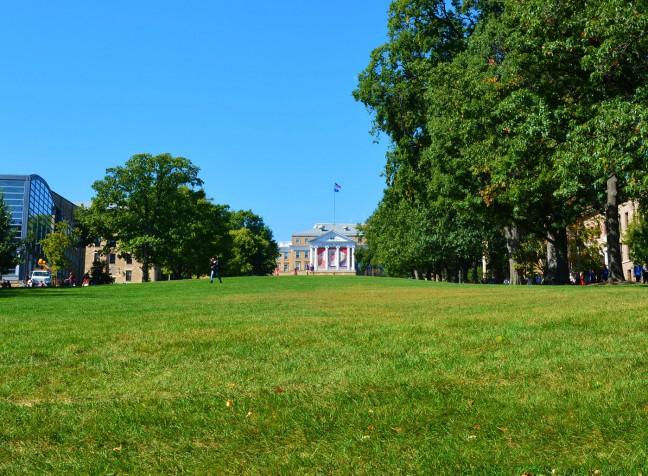For Karen Brown, a disabled 63-year-old returning student who suffers from lupus, commuting to campus is unbearable.
Despite university efforts to adhere to accessibility requirements, Brown said University of Wisconsin falls short in meeting the needs of the disabled.
Brown said she must suffer through all types of weather to get to campus via public transportation because she cannot afford the high price of accessible parking spaces on campus.
“I have a perfectly functional car sitting steps outside my apartment,” Brown said. “I could avoid exposure to weather that so terribly aggravates the pain I’m in. However, nearly every state-sponsored disabled parking spot on campus has been removed and replaced by a ‘UW disabled’ parking spot.”
For Brown, these disabled parking spots, at $650, are nearly a month’s income, a price that makes the use of a personal car unfeasible, she said.
Brown gave a presentation to the Campus Master Plan officials outlining accessibility issues in late April.
The Campus Master Plan provides a broad outline of university building projects for the next 10 to 20 years. Officials will complete the update to the plan by fall 2016.
Cathy Trueba, director of the McBurney Disability Center at UW, said the best way to work around such barriers is to plan a schedule that considers the time it will take to get from point A to point B given the transportation available.
According to the UW Transportation Services website, the 2014-15 rates for parking permits range from $653 to $1,199 based on the parking space. Yet for those with disabilities, the parking office works to give the cheapest space in the lot closest to their place of work, Trueba said.
Despite budget cuts, Trueba said the university will continue to make accessibility a priority as they continue to improve and renovate the campus.
A new solution UW tested this year is the Accessible Circulator Shuttle, which caters to those with disabilities by having a set route that will deviate upon request, Trueba said.
This shuttle aids in some of the issues traveling up Bascom Hill poses, Trueba said. It can take those who would have trouble walking up the hill directly to whichever building they need to go, unlike a typical bus route, which only stops at the top, Trueba said.
But this improvement isn’t enough for everyone, as traveling from off-campus locations provides another set of problems, Trueba said. When dealing with transportation to and from the university, both city and campus methods must be taken into consideration and mapped out, Trueba said.
Top Tantivivant, UW accessibility coordinator, said despite complaints such as Brown’s, making sure campus is accessible to those with disabilities is a topic under consistent consideration and modification.
Tantivivant said there are certain accessibility requirements that must be met in any given building, such as automatic door openers, ramps, handrails and high-low drinking fountains. These modifications are designed to benefit people with and without disabilities, he said.
In the upcoming Master Plan, Tantivivant said they will continue to do assessments on the current state of accessibility and try to set priorities of what to add to improve and keep campus in compliance with federal and state guidelines.
“We always try to go above and beyond minimum requirements and try to use the concept of universal design to make sure things are accessible for everybody,” Tantivivant said.













